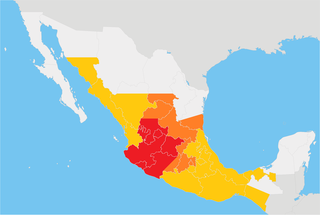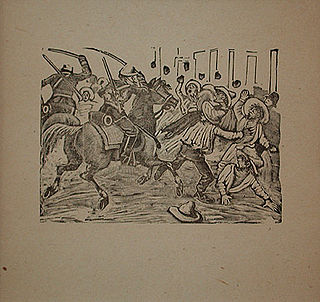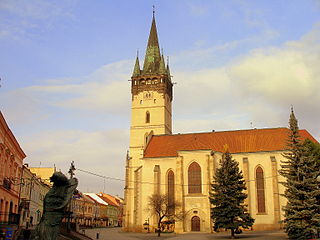
The Society of Jesus, also known as the Jesuit Order or the Jesuits, is a religious order of clerics regular of pontifical right for men in the Catholic Church headquartered in Rome. It was founded in 1540 by Ignatius of Loyola and six companions, with the approval of Pope Paul III. The society is engaged in evangelization and apostolic ministry in 112 nations. Jesuits work in education, research, and cultural pursuits. Jesuits also conduct retreats, minister in hospitals and parishes, sponsor direct social and humanitarian ministries, and promote ecumenical dialogue.

The Pontifical Gregorian University, is a higher education ecclesiastical school located in Rome, Italy.

Spanish America refers to the Spanish territories in the Americas during the Spanish colonization of the Americas. The term "Spanish America" was specifically used during the territories' imperial era between 15th and 19th centuries. To the end of its imperial rule, Spain called its overseas possessions in the Americas and the Philippines "The Indies", an enduring remnant of Columbus's notion that he had reached Asia by sailing west. When these territories reach a high level of importance, the crown established the Council of the Indies in 1524, following the conquest of the Aztec Empire, asserting permanent royal control over its possessions. Regions with dense indigenous populations and sources of mineral wealth attracting Spanish settlers became colonial centers, while those without such resources were peripheral to crown interest. Once regions incorporated into the empire and their importance assessed, overseas possessions came under stronger or weaker crown control.

The Mexican Catholic Church, or Catholic Church in Mexico, is part of the worldwide Catholic Church, under the spiritual leadership of the Pope, his Curia in Rome and the national Mexican Episcopal Conference. According to the Mexican census, Roman Catholicism is the dominant religion in Mexico, practiced by 77.7% of the population in 2020. A Statistica survey suggests this number could be lower, suggesting Catholics could make up only 72% of the nation.
Anti-clericalism is opposition to religious authority, typically in social or political matters. Historical anti-clericalism has mainly been opposed to the influence of Roman Catholicism. Anti-clericalism is related to secularism, which seeks to separate the church from public and political life.

The suppression of the Society of Jesus was the removal of all members of the Jesuits from most of Western Europe and their respective colonies beginning in 1759 along with the abolition of the order by the Holy See in 1773. The Jesuits were serially expelled from the Portuguese Empire (1759), France (1764), the Two Sicilies, Malta, Parma, the Spanish Empire (1767) and Austria, and Hungary (1782). Political manoeuvrings both in Rome and within each country involved influenced this timeline. The papacy reluctantly acceded to the anti-Jesuit demands of various Catholic kingdoms while providing minimal theological justification for the suppressions.

The Cristero War, also known as the Cristero Rebellion or La Cristiada, was a widespread struggle in central and western Mexico from 1 August 1926 to 21 June 1929 in response to the implementation of secularist and anticlerical articles of the 1917 Constitution. The rebellion was instigated as a response to an executive decree by Mexican President Plutarco Elías Calles to strictly enforce Article 130 of the Constitution, a decision known as Calles Law. Calles sought to limit the power of the Catholic Church in Mexico, its affiliated organizations and to suppress popular religiosity.

José Ramón Miguel Agustín Pro Juárez, also known as Blessed Miguel Pro, SJ was a Mexican Jesuit priest executed under the presidency of Plutarco Elías Calles on the false charges of bombing and attempted assassination of former Mexican President Álvaro Obregón.

The Catholic Church in Nicaragua is the Nicaraguan part of the worldwide Catholic Church, under the spiritual leadership of the Pope, curia in Rome, and the Conference of Nicaraguan Bishops.

The Catholic Church during the Age of Discovery inaugurated a major effort to spread Christianity in the New World and to convert the indigenous peoples of the Americas and other indigenous peoples. The evangelical effort was a major part of, and a justification for, the military conquests of European powers such as Portugal, Spain, and France. Christian missions to the indigenous peoples ran hand-in-hand with the colonial efforts of Catholic nations. In the Americas and other colonies in Asia, and Africa, most missions were run by religious orders such as the Franciscans, Dominicans, Augustinians, and Jesuits. In Mexico, the early systematic evangelization by mendicants came to be known as the "Spiritual Conquest of Mexico".
The Calles Law, or Law for Reforming the Penal Code, was a statute enacted in Mexico in 1926, under the presidency of Plutarco Elías Calles, to enforce restrictions against the Catholic Church in Article 130 of the Mexican Constitution of 1917. Article 130 declared that the church and state are to remain separate. To that end, it required all "churches and religious groupings" to register with the state and placed restrictions on priests and ministers of all religions. Priests and ministers were prohibited from holding public office, canvass on behalf of political parties or candidates, or inherit property from persons other than close blood relatives. President Calles applied existing laws regarding the separation of church and state throughout Mexico and added his own legislation.
The modern history of anticlericalism has often been characterized by deep conflicts between the government and the Catholic Church, sometimes including outright persecution of Catholics in Mexico.

The Twelve Apostles of Mexico, the Franciscan Twelve, or the Twelve Apostles of New Spain, were a group of twelve Franciscan missionaries who arrived in the newly-founded Viceroyalty of New Spain on May 13 or 14, 1524 and reached Mexico City on June 17 or 18, with the goal of converting its indigenous population to Christianity. Conqueror Hernán Cortés had requested friars of the Franciscan and Dominican Orders to evangelize the Indians. Despite the small number, it had religious significance and also marked the beginning of the systematic evangelization of the Indians in New Spain.

The history of the Catholic Church in Mexico dates from the period of the Spanish conquest (1519–21) and has continued as an institution in Mexico into the twenty-first century. Catholicism is one of many major legacies from the Spanish colonial era, the others include Spanish as the nation's language, the Civil Code and Spanish colonial architecture. The Catholic Church was a privileged institution until the mid nineteenth century. It was the sole permissible church in the colonial era and into the early Mexican Republic, following independence in 1821. Following independence, it involved itself directly in politics, including in matters that did not specifically involve the Church.

Irreligion in Mexico refers to atheism, deism, religious skepticism, secularism, and secular humanism in Mexican society, which was a confessional state after independence from Imperial Spain. The first political constitution of the Mexican United States, enacted in 1824, stipulated that Roman Catholicism was the national religion in perpetuity, and prohibited any other religion. Since 1857, however, by law, Mexico has had no official religion; as such, anti-clerical laws meant to promote a secular society, contained in the 1857 Constitution of Mexico and in the 1917 Constitution of Mexico, limited the participation in civil life of Roman Catholic organizations and allowed government intervention in religious participation in politics.

In 16th-century Christianity, Protestantism came to the forefront and marked a significant change in the Christian world.
This article details the history of the Catholic Church in Brazil from the colonial era until the modern era. The Federative Republic of Brazil is the largest country in South America. It is the world's fifth largest country, both by geographical area and by population with over 201 million people. Catholicism is the country's predominant faith with approximately 64.6% of the population identifying as a member of the religion. Brazil has the world's largest Catholic population.
The Mexican Catholic Apostolic Church is an Independent Catholic denomination founded in 1925, by separating from the Catholic Church. It was created to bolster revolution with the support of the Regional Confederation of Mexican Workers (CROM) and Mexican President Plutarco Elías Calles' approval. Its development was marked by several internal crises, followed by consequent splits and mergers. Since 1993, it has been officially listed in the Mexican Federal Registry of Religious Associations.

National League for the Defense of Religious Liberty was a Mexican Catholic religious civil rights organization formed in March 1925 that played a crucial role in the Cristero War of 1926 to 1929.
The ideas of the Spanish Enlightenment, which emphasized reason, science, practicality, clarity rather than obscurantism, and secularism, were transmitted from France to the New World in the eighteenth century, following the establishment of the Bourbon monarchy in Spain. In Spanish America, the ideas of the Enlightenment affected educated elites in major urban centers, especially Mexico City, Lima, and Guatemala, where there were universities founded in the sixteenth and seventeenth centuries. In these centers of learning, American-born Spanish intellectuals were already participants in intellectual and scientific discourse, with Spanish American universities increasingly anti-scholastic and opposed to “untested authority” even before the Spanish Bourbons came to power. The best studied is the University of San Carlos Guatemala, founded in 1676.

















